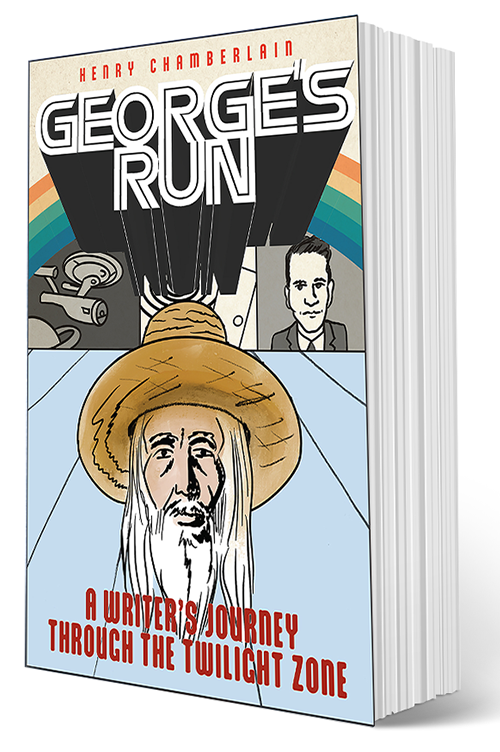
Eventually Everything Connects: Eight Essays on Uncertainty. Sarah Firth. Allen & Unwin, 2023. 288pp. AUD $34.99 (Graphic Mundi, June 2024 U.S. release.)
Imagine someone in the most uninhibited, vivid and precise way sharing with you what is going on in their mind. We are all capable of such things, given enough trust, and we welcome such primal and articulate sharing. Well, that is what you get in this highly engaging tour de force, a book about everything by an artist at the top of her field. Sarah Firth is an accomplished artist who is known for her work as a graphic recorder. That’s someone who is hired to do a live drawing of any given event or meeting and dissect what is going on, bringing out the essence of ideas and strategies discussed, which results in an info-graphic type of mural. Firth has taken this skill and elevated it to an extended narrative in her new book where she walks and talks the reader through not only her life but what it means to be alive in the first place. Quite an ambitious task that totally delivers on its promise.

Firth’s book was originally published by Allen & Unwin, under the Joan imprint, in Australia and will be published by Graphic Mundi in June of this year in the United States. It’s wonderful to see that Graphic Mundi picked it up in the States as it’s an imprint of Penn State University with a growing reputation for books on health and well being. The book is a collection of eight observational visual essays, each piece is an extended narrative in comics format. In this way, Firth organizes her lines of thoughts by separately covering topics in manageable chunks: the joy of life; sexuality in general; what gets our attention; what makes up a person; and so on. I think each segment is a gem to itself and it all adds up to a satisfying whole that invites rereading.

First and foremost, this book is for everyone and all ages, starting around age 14 but your mileage may vary. While it is not the primary subject, there is nudity and honest discussion of sex, which is in a tasteful and educational manner. On the whole, this book will be of prime interest to young adults, college students and discerning adult readers. Alright, with that said, Firth does a great job with sustaining the concept of the author engaged in a personal essay with the reader. Firth, at times, is literally a symbolic stock character, naked with nothing to hide. She could be you or me. I think it’s a healthy way to address oneself and your audience. In fact, when it makes sense for me, I am happy to include myself naked in my own work. In the end, it’s really the only way to get to the root of the matter: we are all beings, sharing so much in common.

Firth, by profession as a graphic recorder and by nature as an inquisitive person, is a consummate explainer. She knows how to explain. She loves to explain. She will explain anything to you. It is that kind of energy and passion that is like rocket fuel for this marvelous book. I will say that this is just the sort of book that many creatives imagine themselves doing but maybe are daunted as to where to begin. Well, it takes persistence and it definitely takes planning. A careful reading will show you that this is a work built upon a steady amassing of elements.

Take, for instance, the metaphor of the moth that visits Firth at the beginning of her journey and comes back to recap and reconcile at the end. You can imagine that little moth, can’t you? In Australia, it’s the bogongs that are the prominent breed. In fact, the First Nations people of Australia perfected the preparation of this moth as a delicacy. Firth masterfully weaves these moths into her narrative as she does with various other compelling items, some familiar and some uncanny, the very stuff of life. At the end of the book, it is a massive hive of moths, trapped by their unrelenting attraction to bright lights, that provide the satisfying existential grace note.

One of the prime characteristics of an excellent graphic recording is managing to collect as many of the key kernels of wisdom that bubble up during an event. It’s not necessary to capture every insight but the ones that resonate the most in the moment. In the right hands, a capable and confident graphic recorder, the big picture emerges buoyed up by the sum of its parts. And so it is with this book, which is an ideal example of a graphic narrative that adds up to a treasure trove of ideas and thoughts. With just the right sense of storytelling, Sarah Firth assembles and reassembles. Whether it’s a moth, a slug, the perfect quote or a case made for the best way to carve up an orange, eventually everything connects.







































